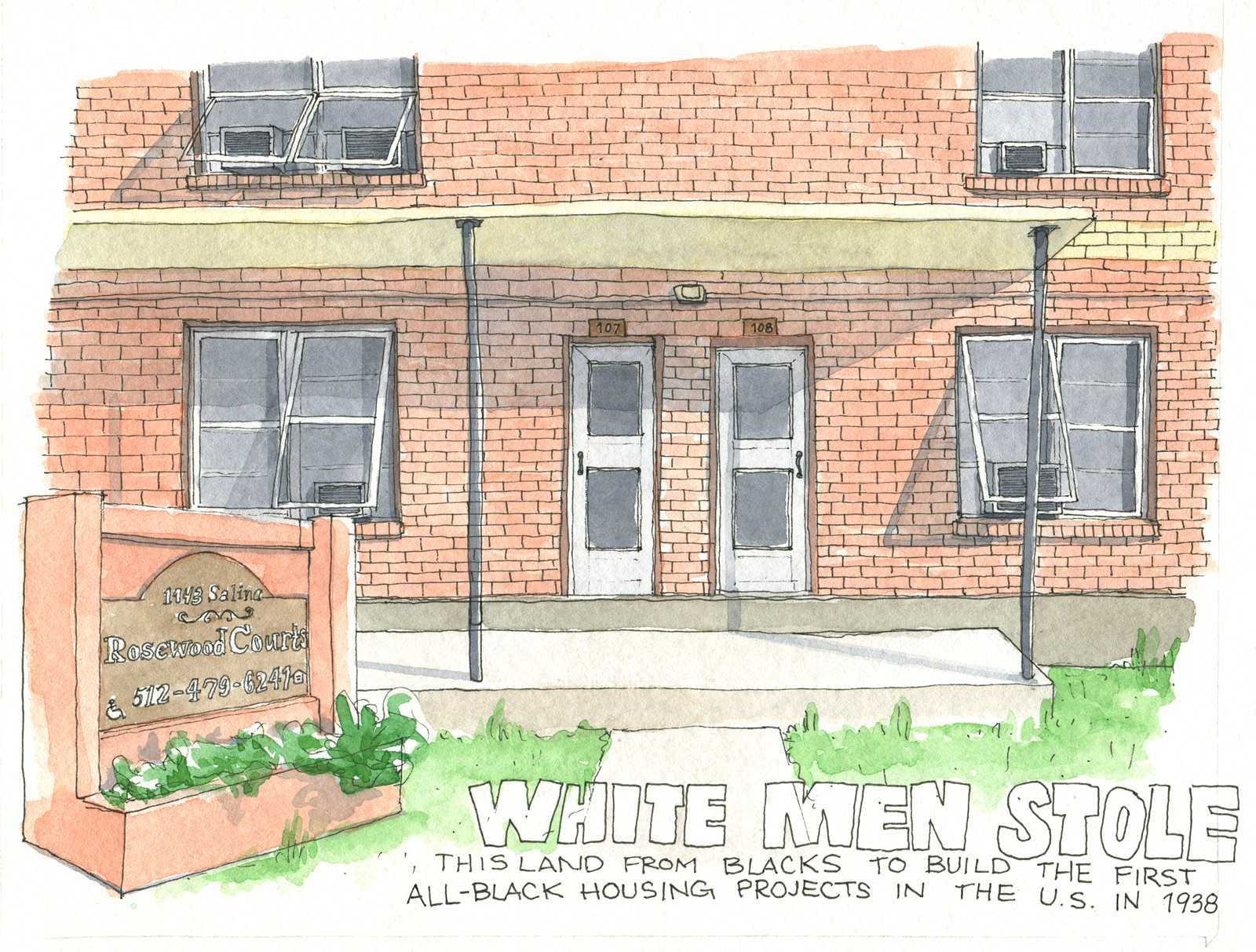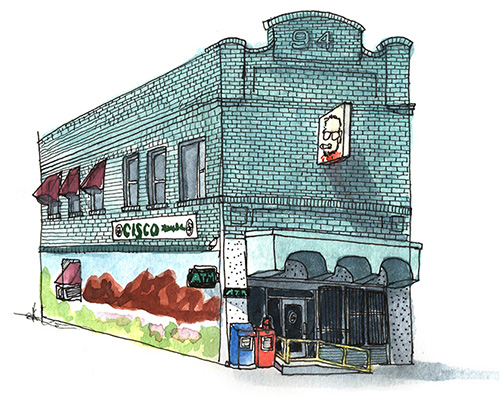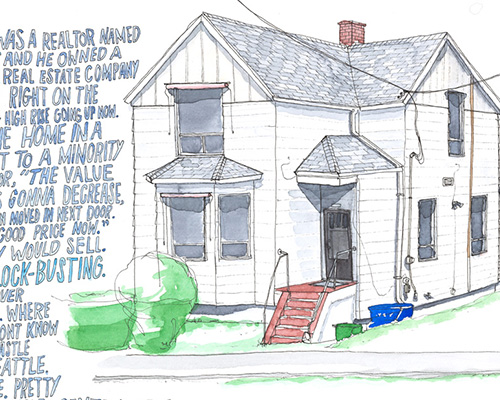East Austin Work
2017-2020A series focused on the city planning and history of East Austin, the once predominantly Black and Latino neighborhoods.


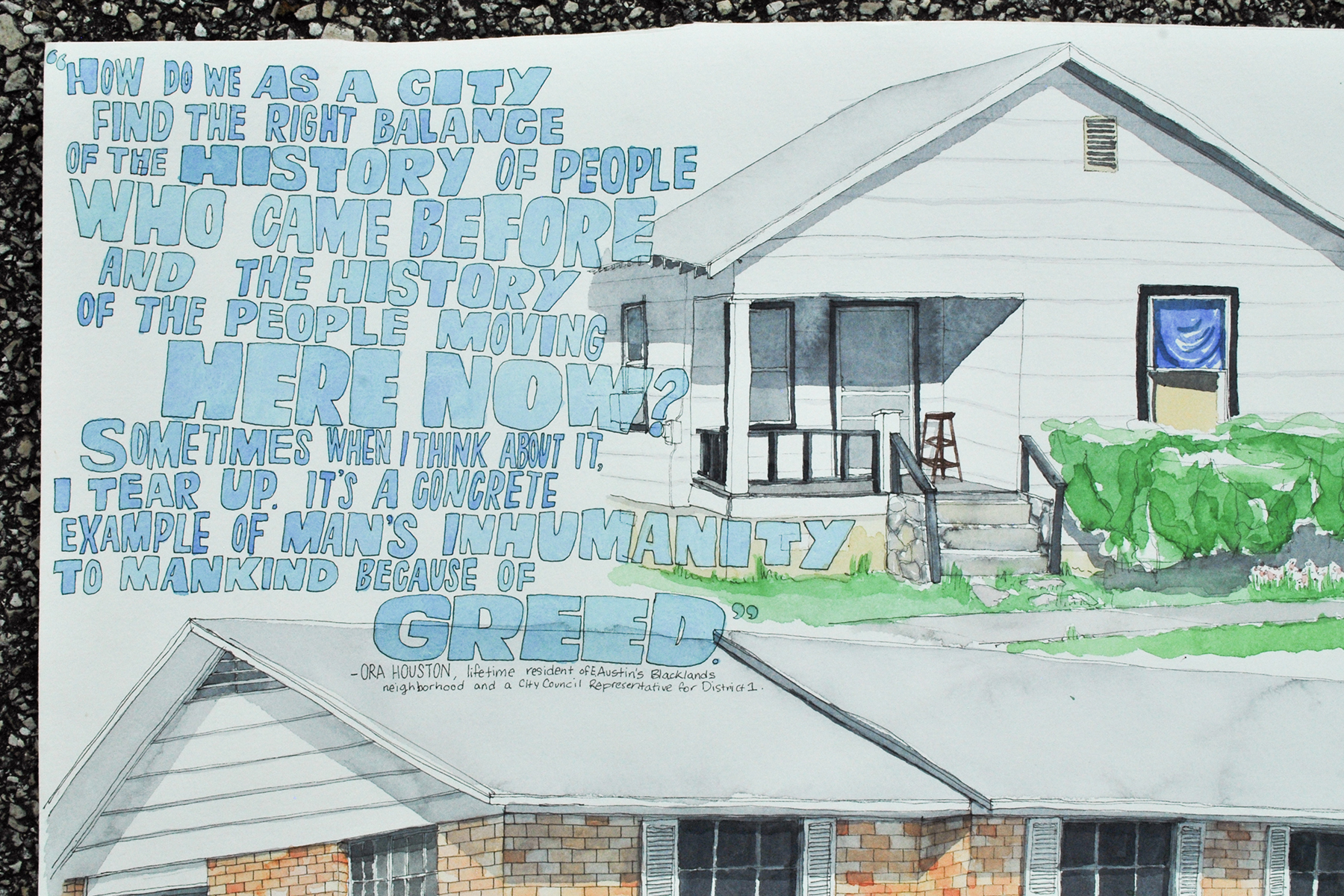

The New Deal Saved White America
acrylic and paper on canvas, 24x36”
I grew up believing the common American myths about why we are segregated still to this day—which covers up the intentional, planned separation of whites and communities of color in the 1920s-60s by the federal government using public policy.
The fine print collaged into this painting reads, "To pass New Deal legislation, FDR needed the votes of the Southern congressmen and senators, who agreed to support the economic reform only if it excluded African American’s access to the new social programs. Without access to these programs, African Americans were unable to pull themselves up and out of poverty in the 30s and 40s at the rates whites were able to. The Federal Housing Administration, a New Deal program, insures loans for homes, and until the 60s openly discriminated against Blacks and Latinos with clauses in home deeds called restrictive racial covenants that forbade resale of property to ‘any person not of the Caucasian race’. Racial covenants allowed the US govt to invest in the welfare and success of white communities. To this day, home equity continues to be the main source of wealth for middle class Americans.”
I grew up believing the common American myths about why we are segregated still to this day—which covers up the intentional, planned separation of whites and communities of color in the 1920s-60s by the federal government using public policy.
The fine print collaged into this painting reads, "To pass New Deal legislation, FDR needed the votes of the Southern congressmen and senators, who agreed to support the economic reform only if it excluded African American’s access to the new social programs. Without access to these programs, African Americans were unable to pull themselves up and out of poverty in the 30s and 40s at the rates whites were able to. The Federal Housing Administration, a New Deal program, insures loans for homes, and until the 60s openly discriminated against Blacks and Latinos with clauses in home deeds called restrictive racial covenants that forbade resale of property to ‘any person not of the Caucasian race’. Racial covenants allowed the US govt to invest in the welfare and success of white communities. To this day, home equity continues to be the main source of wealth for middle class Americans.”

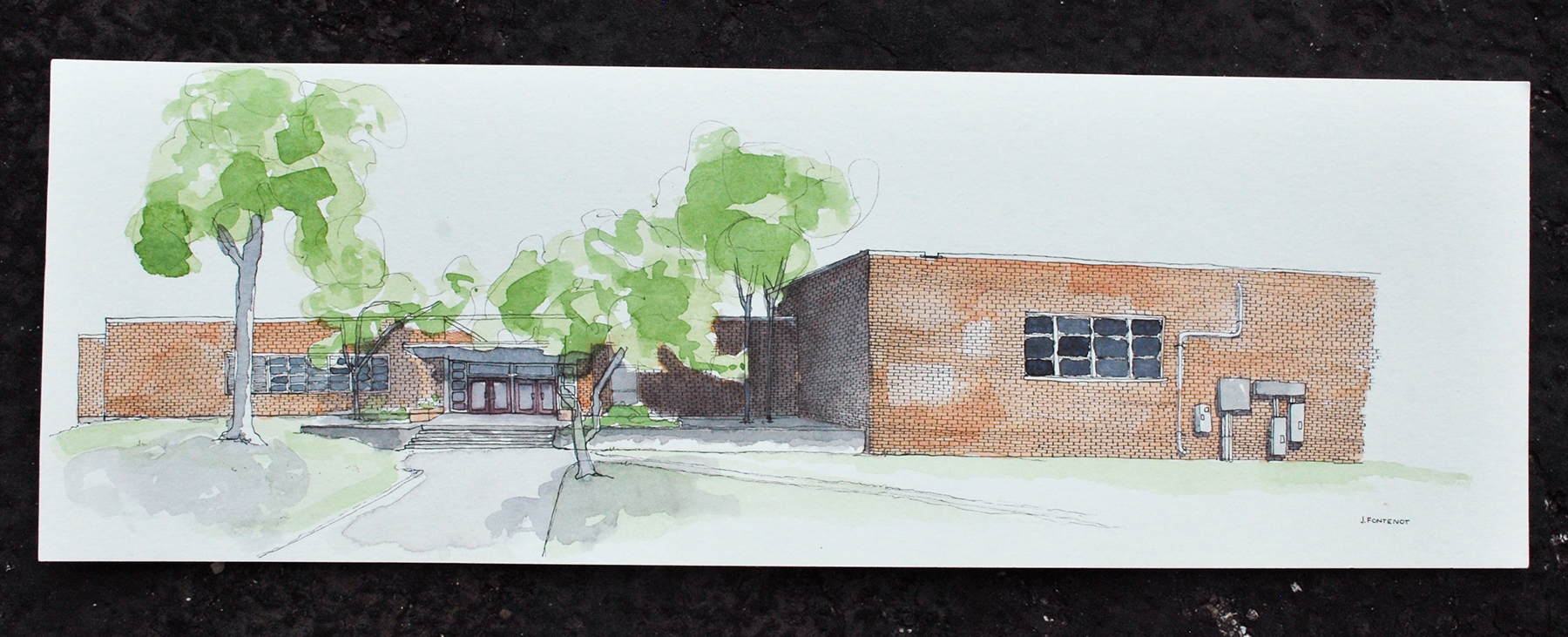
Above
L.C. Anderson High School in 2017 before construction began on the property watercolor & pen on paper, 6x18”
Right
Anderson Protest in 1971 watercolor, pen and collage on paper, 12x16”
L.C. Anderson was the Black high school in East Austin, known statewide for its excellence. It was also the civic center for the East Austin community. In 1971 it was ordered closed by a federal judge who ruled for desegregation.
Despite the neighborhood protests, the high school closed. Many in the community point to this as the beginning of the end.
L.C. Anderson High School in 2017 before construction began on the property watercolor & pen on paper, 6x18”
Right
Anderson Protest in 1971 watercolor, pen and collage on paper, 12x16”
L.C. Anderson was the Black high school in East Austin, known statewide for its excellence. It was also the civic center for the East Austin community. In 1971 it was ordered closed by a federal judge who ruled for desegregation.
Despite the neighborhood protests, the high school closed. Many in the community point to this as the beginning of the end.


Oakwood Cemetery, oil and paper on board, 12x72”
Rosewood Courts in East Austinwatercolor & pen on paper, 8x10”
Rosewood Courts was the first all-Black housing projects in the United States, located in the heart of East Austin. This plot of land was a Black-owned park established in 1907 as a place to celebrate Emancipation Day. In 1938 white men in the government used eminent domain to “legally” acquire the property to build these projects. There was other land available nearby, but they chose to acquire the park instead.
